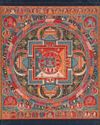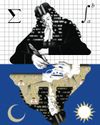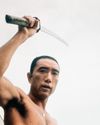
It is a scene by now observed by countless parents and many nonparents, from Tokyo to Paris and beyond. In a classroom or on a stage, a platoon, or sometimes a small army, of very young children are sawing away in unison at Vivaldi's Concerto in A Minor, with maximum aplomb and some surprising musical skill. "Little geniuses!" the observers mutter, either admiringly or universally, among the nonparents-sarcastically. The Suzuki method of musical training has had another outing, and with it the passionate belief that little children can be activated as artists-alongside the companion quarrel about whether they are modelling or merely mimicking mature music-making. Are they musicians in a meaningful sense or just the human equivalent of those trained seals who used to play horns in the circus? Though the Suzuki method was originally specific to the violin and to classical music, it raises a larger question: Is the kind of mastery we associate with historic "prodigies" actually available to every child, with the right encouragement?
In "Suzuki: The Man and His Dream to Teach the Children of the World" (Harvard), the Tokyo-born historian Eri Hotta takes on the life story of the man who made the mini-masters. But, as often happens with books pointing to big questions, the most interesting stuff points back at smaller or, anyway, more particular ones. The Suzuki story turns out to be a fascinating study in the hybrid nature of human culture, tracing a remarkable cross-century triple play-European music to Japanese discipline, ending with a putout at a first base manned by mad American parental ambition.
Esta historia es de la edición November 14, 2022 de The New Yorker.
Comience su prueba gratuita de Magzter GOLD de 7 días para acceder a miles de historias premium seleccionadas y a más de 9,000 revistas y periódicos.
Ya eres suscriptor ? Conectar
Esta historia es de la edición November 14, 2022 de The New Yorker.
Comience su prueba gratuita de Magzter GOLD de 7 días para acceder a miles de historias premium seleccionadas y a más de 9,000 revistas y periódicos.
Ya eres suscriptor? Conectar

MEAN TIME
“Hard Truths.”

ENLIGHTEN ME
The secret beauty of mandalas.

THE BEST OF THEM
His was a genius for the ages. Will Gottfried Leibniz ever get his due?

DEATH CULT
Yukio Mishima’ tortured obsessions were his making—and his unmaking.

Prophecy
The night of Dev’s twenty-second birthday, he was invited to sit with the elders after dinner.

A TALE OF TWO DISTRICTS
Lauren Boebert and Colorado’s red-blue divide.

THE TIKTOK TRAIL
Andean migrants draw others to the U.S. with videos depicting themselves as living the American Dream.

LOVE AND THEFT
Did a best-selling romantasy novelist steal another writer's story?

OUR NEW TWO-FACTOR AUTHENTICATION SYSTEM
Our two-factor authentication system is expanding because text messages and e-mailed codes are becoming less secure. Also, we’re committed to making sure your log-in process is more of a hassle than it needs to be.

STILL PROCESSING
Why is the American diet so deadly?